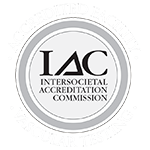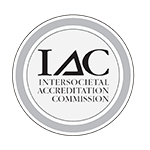
Vascular diseases encompass a wide array of conditions affecting the blood vessels throughout the body. From the potentially life-threatening abdominal aortic aneurysm (AAA) to the more common varicose veins, these conditions can significantly impact an individual's health and quality of life.
While many vascular diseases can be managed through non-surgical means, there are instances where surgical intervention becomes necessary. Let’s explore the indications that may lead to various types of surgical interventions for vascular diseases, shedding light on when it's time to consider such options.
Understanding Vascular Diseases:
Before delving into the indications for surgical intervention, it's essential to have a basic understanding of some of the most common vascular diseases:
- Abdominal Aortic Aneurysm (AAA): This condition involves the weakening and ballooning of the abdominal aorta, the body's main artery supplying blood to the abdomen, pelvis, and legs.
- Carotid Artery Disease (CAD): Carotid Artery Disease occurs when the carotid arteries, which supply blood to the brain, become narrowed or blocked due to the buildup of plaque.
- Peripheral Artery Disease (PAD): PAD is characterized by the narrowing or blockage of arteries outside the heart and brain, typically affecting the arteries that supply blood to the legs and feet.
- Chronic Venous Insufficiency: This condition occurs when the veins in the legs fail to adequately return blood to the heart, leading to symptoms such as swelling, leg heaviness, and skin changes.
- Varicose Veins: Varicose veins are enlarged, twisted veins that often appear blue or dark purple and may cause discomfort or cosmetic concerns.
Indications for Surgical Intervention:
While many vascular diseases can be managed through lifestyle modifications, medications, or minimally invasive procedures, there are certain indications that may necessitate surgical intervention. These indications often vary depending on the specific vascular disease, its pathology and the severity of the condition. Below are some basic guidelines or scenarios where surgical options may be considered:
- Size and Growth Rate of Abdominal Aortic Aneurysms:
- Large AAA (typically >5 cm in diameter) or rapidly growing aneurysms may require surgical repair to prevent rupture, a potentially life-threatening complication.
- Severity of Carotid Artery Disease:
- Severe carotid artery stenosis (usually >70% narrowing) in individuals with a history of transient ischemic attacks (TIAs) or strokes may warrant carotid endarterectomy or carotid artery stenting to reduce the risk of stroke.
- Symptomatic Peripheral Artery Disease:
- Severe claudication or critical limb ischemia (rest pain, ulcers, or gangrene) that significantly impairs mobility and quality of life may necessitate surgical revascularization procedures such as angioplasty with stenting or open bypass surgery.
- Complications of Chronic Venous Insufficiency and Varicose Veins:
- Advanced chronic venous insufficiency with skin ulcerations or recurrent varicose veins causing symptoms (despite conservative measures such as elevation and compression therapy) may require surgical interventions such as laser ablation, microphlebectomy, or sclerotherapy.
Statistics and Treatment Trends:
Understanding the prevalence of vascular diseases and the utilization of surgical treatments provides valuable insights into healthcare trends and patient outcomes. While specific statistics may vary by region and healthcare system, studies have shown varying rates of surgical intervention for different vascular conditions:
- According to the American Heart Association, approximately 12 million Americans have peripheral artery disease (PAD), with only a fraction receiving surgical or endovascular interventions.
- A study published in the Journal of Vascular Surgery estimates that the incidence of death from ruptured AAA have declined by >50% in the last 20 years, probably because of multiple factors including declining cigarette consumption, increased public awareness of AAA disease, improved surgical outcomes and access to treatment afforded by endovascular repair techniques.
- The utilization of surgical treatments for carotid artery disease has declined in recent years due to advancements in medical therapy and minimally invasive procedures such as carotid artery stenting.
Navigating the decision to explore surgical options for vascular diseases requires careful consideration of various factors, including the specific condition, its severity, and individual patient pathology and characteristics. While surgery may offer significant benefits in terms of preventing complications and improving quality of life, it also entails risks and requires thorough evaluation by a multidisciplinary team of healthcare providers. By understanding the indications for surgical intervention and staying informed about treatment options and trends, patients and healthcare professionals can work together to make well-informed decisions that optimize outcomes and quality of life for individuals with vascular diseases.








